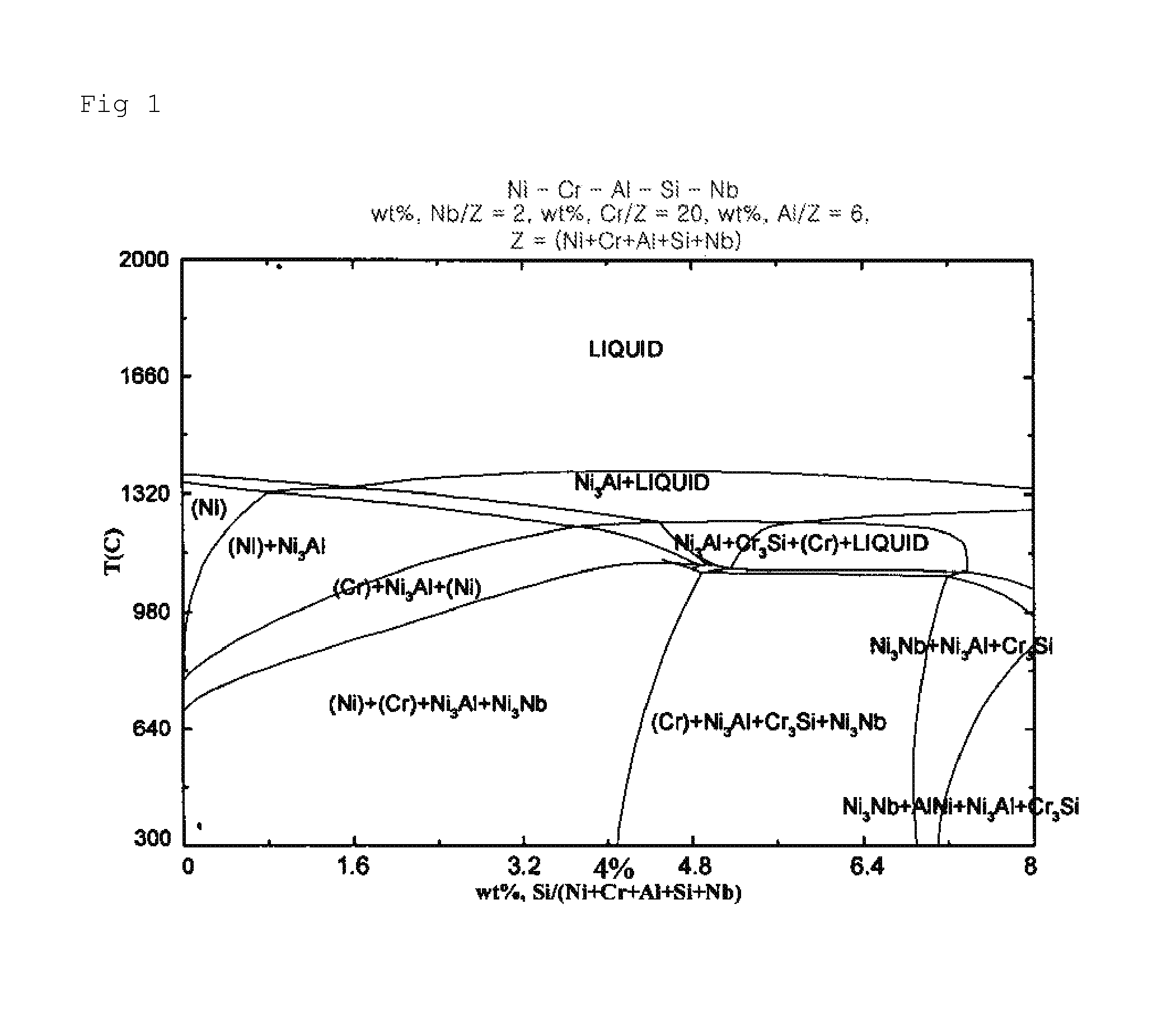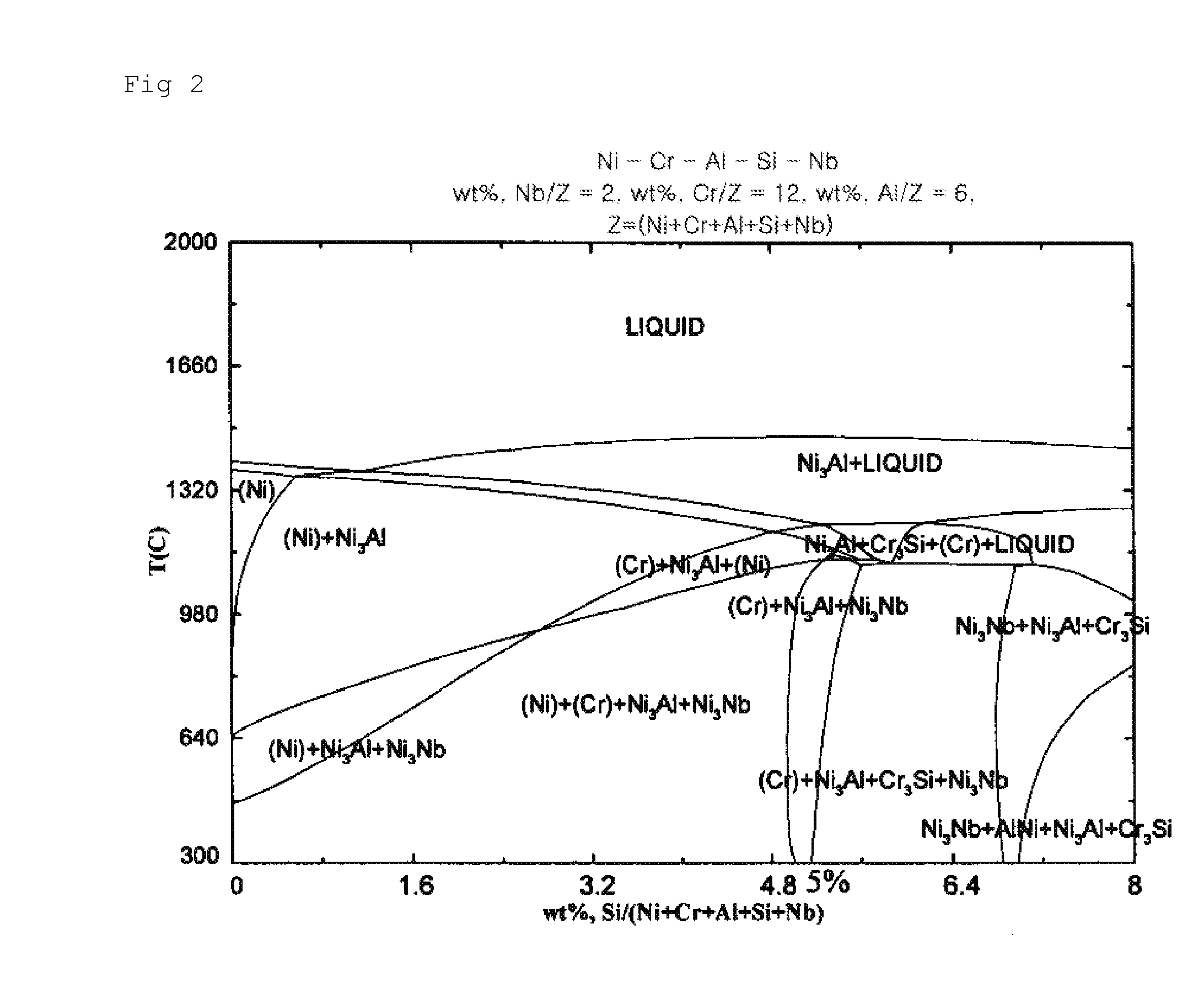Corrosion Resistant Structural Alloy for Electrolytic Reduction Equipment for Spent Nuclear Fuel
a technology of electrolytic reduction and structural alloys, which is applied in the direction of electrolytic processes, electrodes, electrolysis components, etc., can solve the problems of accelerating corrosion, affecting the efficiency of electrolytic processing, so as to improve the corrosion resistance of structural materials, reduce the shutdown period, and enhance the reliability of processing equipment
- Summary
- Abstract
- Description
- Claims
- Application Information
AI Technical Summary
Benefits of technology
Problems solved by technology
Method used
Image
Examples
example
[0042]A novel alloy was fabricated according to the above description. More particularly, four Ni-based alloy ingots having predetermined compositions as listed in TABLE 1 were produced. However, Fe, Co and Mo as alloy elements commonly added to a conventional Ni-based super alloy were omitted in designing the present inventive alloy, since these elements exhibit significant corrosive properties in a LiCl—Li2O molten salt atmosphere.
TABLE 1Composition of AlloyAlloyNiCrFeCoCSiMnPSAlTiNbTaMo *ZrYN-1Bal12.10.110.0640.0611.95.80.52.0———N-2Bal12.20.150.060.044.96.30.52.1————N-3Bal20.20.120.050.0364.56.30.512.0———N-4Bal12.10.110.0650.062.05.80.50200.15
[0043]A process for production of an alloy is conducted as follows: 50 kg of a raw material containing individual elements with corresponding compositions was dissolved with heat at 1700□ in an Ar atmosphere and poured into a preheated mold so as to produce an alloy. On a top of the mold, a hot top was placed in order to prevent contraction ...
PUM
| Property | Measurement | Unit |
|---|---|---|
| corrosion rate | aaaaa | aaaaa |
| corrosion rate | aaaaa | aaaaa |
| flow rate | aaaaa | aaaaa |
Abstract
Description
Claims
Application Information
 Login to View More
Login to View More - R&D
- Intellectual Property
- Life Sciences
- Materials
- Tech Scout
- Unparalleled Data Quality
- Higher Quality Content
- 60% Fewer Hallucinations
Browse by: Latest US Patents, China's latest patents, Technical Efficacy Thesaurus, Application Domain, Technology Topic, Popular Technical Reports.
© 2025 PatSnap. All rights reserved.Legal|Privacy policy|Modern Slavery Act Transparency Statement|Sitemap|About US| Contact US: help@patsnap.com



